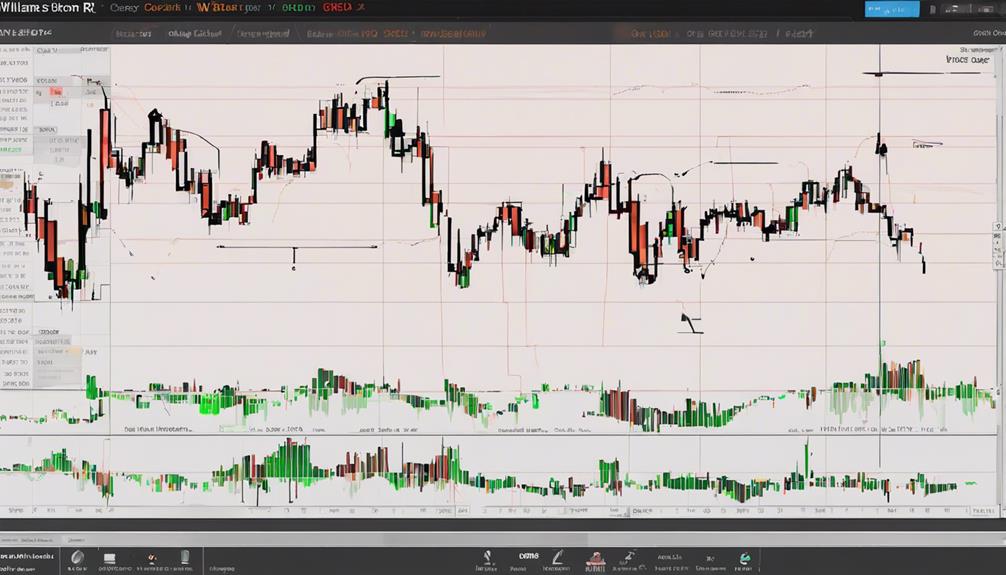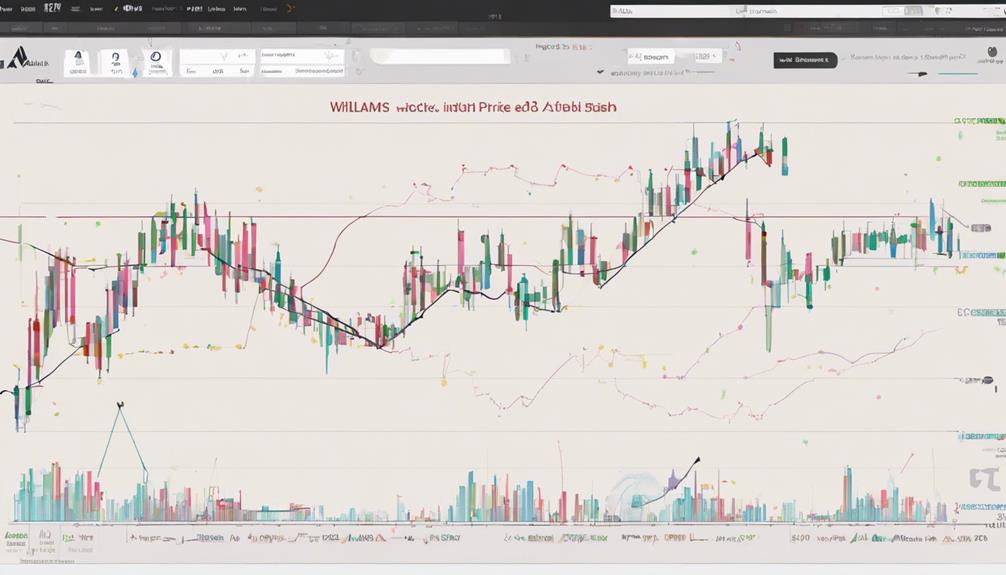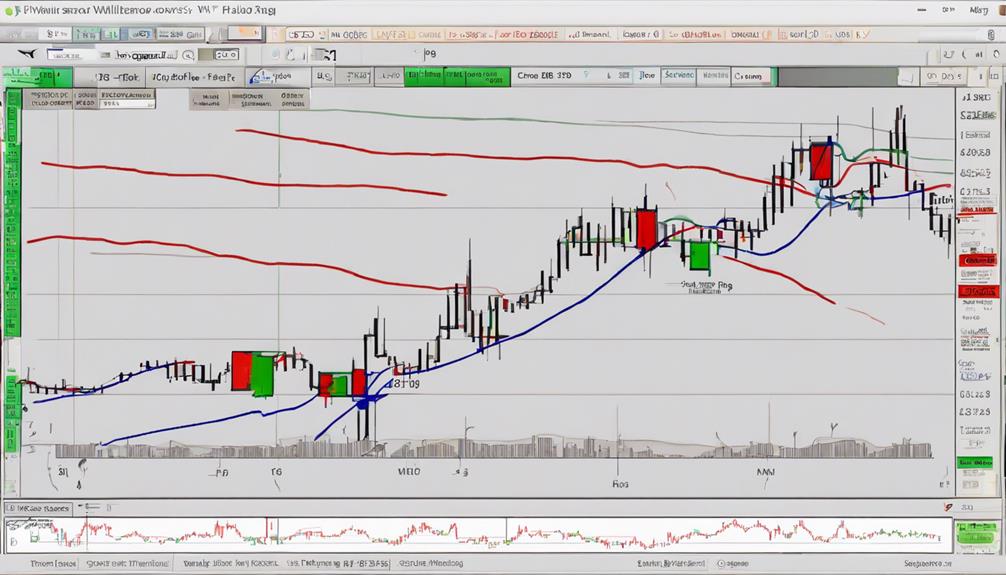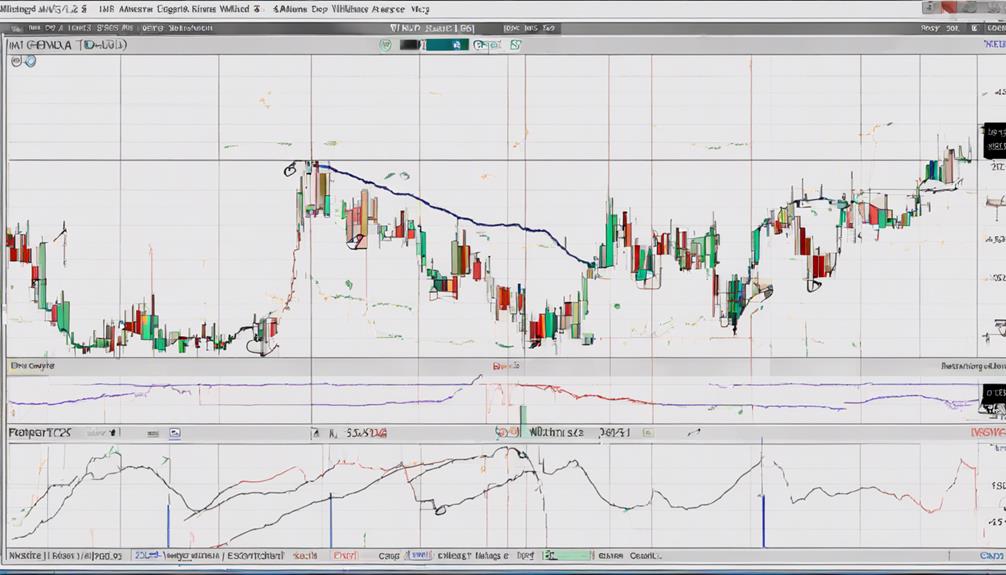Understanding Williams %R signals is essential for making informed decisions in trading. By comprehending the nuances of this indicator, investors can potentially gain an edge in the volatile market environment.
Delving into the top 5 tips for navigating Williams %R signals can provide valuable insights that go beyond surface-level analysis. These tips encompass key aspects such as interpreting overbought and oversold levels, identifying divergence signals, utilizing Williams %R for reversal trading, and incorporating it effectively with other indicators.
Each tip serves as a building block towards mastering the art of deciphering market movements through the lens of Williams %R, offering a strategic advantage to those who seek a deeper understanding of this powerful tool.
Importance of Williams %R Indicator
Analyzing the Williams %R indicator is crucial for traders seeking to comprehend market dynamics and identify potential trading opportunities based on overbought and oversold conditions.
As one of the key technical analysis tools, Williams %R helps generate trading signals by indicating extreme price levels. This momentum oscillator, with values ranging from 0 to -100, is particularly useful for determining entry/exit points and recognizing potential trend reversals.
Traders often use Williams %R in conjunction with other indicators like moving averages to confirm signals and improve accuracy in market decision-making.
Interpreting Overbought and Oversold Levels

Interpreting overbought and oversold levels in the Williams %R indicator is essential for traders to gauge market sentiment and identify potential trading opportunities with precision. Williams %R indicates overbought conditions when above -20 and oversold conditions when below -80. When the indicator reaches these extreme levels, traders often anticipate potential reversals in the market trend. Overbought levels suggest possible selling opportunities, while oversold levels may indicate buying opportunities.
Understanding these levels is crucial as they can help traders identify potential trend reversals or continuations. By analyzing overbought and oversold conditions, traders can make informed trading decisions based on the sentiment reflected in the market. Therefore, monitoring the Williams %R indicator for these extreme levels is a key aspect of utilizing technical indicators effectively to enhance trading strategies and optimize decision-making processes.
Identifying Divergence Signals

Identification of Divergence Signals in the Williams %R indicator is crucial for detecting potential trend reversals or shifts in market sentiment. When analyzing divergence signals, traders should consider the following key points:
- Bullish Divergence: This occurs when the price of an asset forms a lower low while the Williams %R indicator simultaneously makes a higher low. Bullish divergence suggests a potential upward reversal in the price movement.
- Bearish Divergence: Conversely, bearish divergence is identified when the price of an asset creates a higher high while the Williams %R indicator forms a lower high. This divergence signal indicates a possible downward trend reversal.
- Confirmation with Other Indicators: It is essential to confirm divergence signals with other technical indicators to make more reliable trading decisions. By cross-referencing divergence signals with other indicators, traders can increase the accuracy of their analysis and improve the likelihood of successful trades.
Understanding and utilizing divergence signals can help traders anticipate potential market movements and make informed decisions based on the discrepancy between price action and the Williams %R indicator.
Using Williams %R for Reversal Trading

When utilizing the Williams %R indicator for reversal trading, traders can capitalize on signals generated as the indicator transitions from overbought to oversold levels, indicating potential market shifts.
Reversal trading with Williams %R involves identifying key levels such as moving from overbought territory (above -20) to oversold territory (below -80) as potential entry points for trades.
Additionally, traders should watch for bullish divergence, where the price forms lower lows while Williams %R forms higher lows, signaling a possible upward reversal. Conversely, bearish divergence occurs when the price creates higher highs while Williams %R makes lower highs, indicating a potential downtrend.
To enhance the effectiveness of reversal trading strategies using Williams %R, traders should confirm signals with other technical indicators or chart patterns. It is crucial to consider the broader market context and incorporate Williams %R with complementary tools to increase the accuracy of trade decisions and maximize profitability.
Incorporating Williams %R With Other Indicators

Utilizing Williams %R in conjunction with various technical indicators enhances the depth of market analysis and provides traders with more robust signals for making informed trading decisions. When combined effectively, Williams %R can offer valuable insights into market dynamics.
Here are three ways to incorporate Williams %R with other indicators:
- Confirming Signals: Pairing Williams %R with moving averages, RSI, and MACD can help validate trading signals, providing traders with more confidence in their decisions.
- Enhanced Analysis: Combining Williams %R with volume analysis offers a deeper understanding of price movements, allowing traders to gauge the strength behind market trends.
- Identifying Patterns and Levels: Integrating Williams %R with chart patterns, Fibonacci retracement levels, trendlines, and support/resistance levels can assist in recognizing potential trend reversals and pinpointing key entry and exit points more accurately.
How Can I Use Williams %R Indicator to Understand Signals Better?
When using the Williams %R indicator, there are a few tips for Williams %R indicator that can help you better understand signals. First, look for overbought or oversold conditions to anticipate a potential reversal. Additionally, pay attention to crossovers and divergence between price and the indicator for clearer signals.
Frequently Asked Questions
How Do You Read a Williams R Indicator?
Reading a Williams %R indicator involves interpreting values between -100 and 0. Overbought conditions are typically above -20, while oversold conditions are below -80. Traders watch for crossovers at -50 and divergences for potential signals.
What Is the Best Setting for the Williams %R Indicator?
The optimal setting for the Williams %R indicator depends on factors like trading timeframe and stock behavior. While the common period length is 14, experimenting with shorter periods like 10 for daily analysis or 8 for weekly view can enhance signal interpretation.
What Is the Williams Trading Strategy?
The Williams trading strategy combines Williams % R and a 100-period moving average to generate buy or sell signals based on price and momentum indicators. It helps traders identify entry and exit points effectively in volatile markets.
Is Williams %R Leading or Lagging?
Williams %R is a leading indicator, providing early signals of potential trend reversals or continuations. By measuring stock momentum, it forecasts shifts in buying or selling pressure ahead of price changes. This proactive insight aids traders in adjusting strategies effectively.
Conclusion
In conclusion, mastering the Williams % R indicator can be a powerful tool for traders seeking to navigate the complexities of the market.
By understanding overbought and oversold levels, identifying divergence signals, utilizing it for reversal trading, and combining it with other indicators, one can enhance their trading strategy.
Like a skilled navigator charting a course through turbulent waters, harnessing the power of Williams % R can lead to successful trading outcomes.


